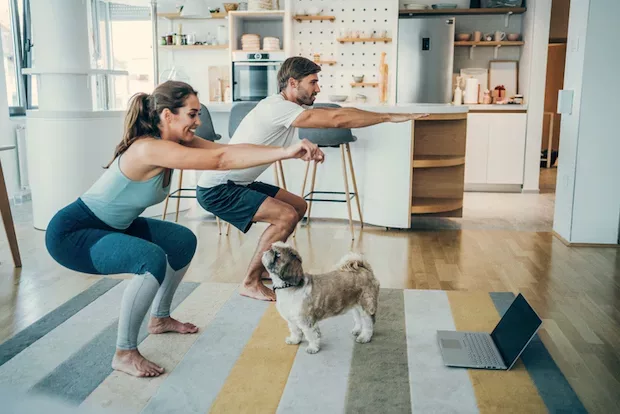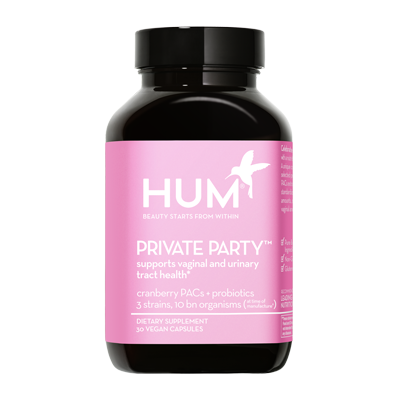Experts share how to strengthen the pelvic floor—and exactly why you’ll want to do so, regardless of your age or gender. Plus: four of the best pelvic floor exercises you can do at home.
When exercising, many of us focus on the main groups, such as the legs, arms, glutes, and core—but these aren’t the only muscles that need movement and training to remain resilient, flexible, and strong. Although you can’t see them, the pelvic floor muscles that reside deep in the pelvis can have a lasting impact on our overall health and well-being because they are connected to many important bodily functions.
“The pelvic floor is made up of a group of muscles that forms a hammock at the base of the pelvis,” says Madelaine Golec, a pelvic health physiotherapist at ECO Physiotherapy. She explains that the pelvic floor is responsible for supporting the pelvic organs (think: the bladder, uterus or prostate, and rectum). “These muscles help to control the flow of urine and feces, are involved in sexual function, keep circulation moving through the pelvis, and part of our core that supports the movement of the hips, back, and pelvis,” she adds.
Pelvic floor exercises date back as far as Ancient Greece and Ancient Rome. However, topics surrounding the pelvic floor (including exercises) have remained relatively taboo—that is, until recently. These days, the health and wellness world is experiencing a pelvic floor revolution, with ever-growing awareness of the importance of pelvic floor muscles in overall well-being. “Studies have shown that pelvic floor dysfunction (problems with muscles, ligaments, and nerves) can lead to a range of issues such as incontinence, pelvic organ prolapse, sexual dysfunction, and pain,” Golec explains. She adds that these symptoms were originally thought to be a normal part of aging, childbirth, or injury, and you “just had to cope with it” or get surgery. But now, many medical professionals have turned to pelvic floor exercises for prevention and treatment alike.
What Is Pelvic Floor Therapy?
Pelvic floor therapy includes exercises that can strengthen and improve the overall health of the pelvic floor. It’s essentially physical therapy for the muscles, ligaments, and nerves of the pelvic floor. When we think of pelvic floor exercises, many of us think about Kegels, which became popular in the 1950s by Dr. Arnold Kegel (hence the name). However, to strengthen your pelvic floor as best you can, you’ll want to go beyond Kegel exercises alone.
“Pelvic floor therapy is different from Kegel exercises because Kegels are just a specific type of exercise that is designed to strengthen the pelvic floor muscles,” says Golec. While Kegels are important and among the best pelvic floor exercises, others may be recommended.
In addition to Kegels, Golec says pelvic floor therapy focuses on treatments like:
- Pelvic floor relaxation
- Exercises to improve muscle strength and coordination (not just of the pelvic floor muscles, but all the muscles around the pelvis and back, too)
- Manual therapy to improve mobility and flexibility
- Education about body mechanics
- Breathing and lifestyle factors that can affect pelvic floor health

Signs of a Weak Pelvic Floor
While pelvic floor exercises are beneficial for everyone, those with weak pelvic floors can experience a transformation through strengthening and building resilience in the deep core.
Some of the most common signs of a weak pelvic floor include:
- Incontinence, aka leakage of urine or feces
- Difficulty with bowel movements or urination
- Bulging, heaviness, or pressure in the pelvic area
- Pelvic pain
- Difficulty with sexual function, including pain during sex or difficulty achieving orgasm
- Low back pain
- SI joint pain and/or hip pain
- Tight pelvic floor muscles that are difficult to relax
Benefits of Pelvic Floor Exercises
A weak pelvic floor is a reason in and of itself to try pelvic floor exercises, especially since consistent exercise can make a difference in the symptoms associated with it and therefore offer relief. But according to Golec, everyone can benefit from pelvic floor exercises—no matter your age or gender—and even if you already have a healthy pelvic floor. “As with any other muscles in the body, we want to have strong and flexible muscles for overall day-to-day function, and we often don’t think to include our pelvic floor,” she explains.
Pelvic floor exercises are particularly important for those who are pregnant or postpartum, “as these muscles can be weakened by the changes in the body that occur during pregnancy and childbirth,” says Golec. Being proactive with pelvic floor exercise is also helpful during perimenopause and menopause since hormones change and can affect the hammock of muscles.
P.S. Seeking relief from menopause symptoms like hot flashes, vaginal dryness, and mood swings? Check out HUM’s Fan Club.
But what about men? “For men, it is important to start pelvic floor exercises before and after prostate surgery, especially the removal of the prostate,” Golec adds. According to Jennifer Self Spencer, PT, DPT, CLT, OCS, a pelvic floor physical therapist at Magic City Physical Therapy, “Men can also experience bowel and bladder symptoms, erectile dysfunction, pelvic and genital pain, and hip, groin, abdominal, and low back pain that can be attributed to pelvic floor dysfunction,” she shares, which makes strengthening the pelvic floor all the more important for men, too.
If you experience any of the signs of a weak pelvic floor—even minimally—Spencer recommends seeing a pelvic floor therapist. “Pelvic floor symptoms often get worse over time, so it is best to get [them] under control sooner rather than later,” she explains, adding that painful conditions are easier to treat in the acute phase (versus waiting until it transforms into chronic pain).
How to Strengthen the Pelvic Floor
Strengthening the pelvic floor through exercise can be done with the help of a professional, as well as at home for preventative measures. Below, experts share four of the best ways to strengthen the pelvic floor.
1. Kegel Exercises
According to Golec, you can’t go wrong with a classic Kegel exercise. “To do Kegel exercises, pretend to stop the flow of urine,” she explains. Note: You don’t want to practice this while actually peeing; this is simply a good way to visualize what your body needs to do. “Try to squeeze and lift the muscles for a count of three, then relax for a count of three,” she continues. From there, Golec recommends adding in some breathwork and coordinating the muscles with breathing. “Try to relax the pelvic floor on the inhale and ‘hold your pee’ on the exhale, working your way up to 10 reps.”
Ladies: Take a look at HUM’s Private Party, a probiotic that supports vaginal pH balance. It also includes cranberry PACs to promote healthy urinary tract function.
2. Diaphragmatic Breathing
“The diaphragm moves in direct coordination with your pelvic floor,” says Joelle Spadaccini, a certified prenatal/postpartum corrective exercise specialist and certified Pilates instructor at Niche Pilates Studio. She adds that the diaphragm expands on an inhale and contracts on an exhale. “Taking deep breaths in and out will work on strengthening the coordination of the pelvic floor,” she explains. Through this process, the pelvic floor should relax, contract, and lift—thus building strength, flexibility, and resilience.

3. Squat With Pelvic Floor Contraction Breath
Spadaccini also recommends adding a functional movement to Kegels and diaphragmatic breathing to train the body to properly function. “Start with your feet hip-width apart and inhale as you sit back and down into a squat while relaxing the pelvic floor,” she explains. From there, begin to stand up and exhale to contract your pelvic floor until you are back in a full standing position. “Once you are back at the top, attempt to hold the contraction of the pelvic floor for 10 seconds.” Then try to completely relax the pelvic floor again while sitting back and down into the next squat. Spadaccini says this exercise takes a lot of focus and coordination from the entire body but, over time and with practice, it can happen naturally when you bend down to pick something up off the floor.
4. Bridges
Bridge exercises are also among the best pelvic floor exercises to try at home. “To do a bridge, lie on your back with your knees bent and your feet flat on the floor,” Golec instructs. “Tighten your pelvic floor muscles and lift your hips off the floor, holding the position for a count of three before lowering back down,” she adds. For an effective circuit, Golec recommends starting with at least 10 reps.
In addition to these exercises, there are a few tips and tricks you can follow for a healthy and strong pelvic floor. “Drink plenty of water and limit bladder irritants like soda, coffee, tea, seltzers, and alcohol,” Spencer advises. She also recommends getting plenty of fiber during the day, noting that adults generally need around 25 to 35 grams of fiber daily. Another way you can support the pelvic floor is by limiting straining while having a bowel movement. Spencer also recommends utilizing a toilet stool and deep breathing.
The Takeaway
Although we can’t see these muscles, the pelvic floor plays a key role in several bodily functions and our overall well-being—so it’s important not to ignore it. And while those with weak pelvic floors are advised to work with a pelvic floor therapist and practice the exercises above, everyone can benefit from Kegels, breathwork, bridges, and other pelvic floor exercises.










